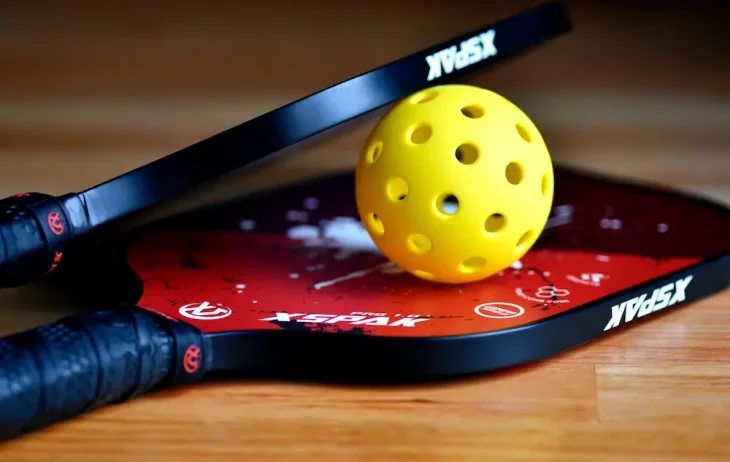
The Rise of Pickleball Injuries & How to Avoid Them
An interview with Sports Medicine Surgeon, Dr. James Johnson
The Journal of Emergency Medicine published a study in 2019, stating that pickleball injuries were rapidly on the rise, reporting an estimated 19,000 pickleball injuries per year. We interviewed Dr. James Johnson, Sports Medicine Orthopedic Surgeon at Panorama, to explore why there’s been such a significant rise in injuries, and how you can avoid getting hurt on the court.
Why Are There So Many Injuries?
Pickleball itself isn’t more dangerous than other sports, unless you count it dangerously fun. The sport has seen a rapid increase in popularity over the last 10 years. “It’s the fastest growing sport for several reasons,” comments Dr. Johnson. “Pickleball is a combination of ping pong, badminton, and tennis. There’s not as much running as in tennis and it’s easy to pick up.”
However, because it is less physically demanding than its tennis counterpart, pickleball is easier to pick up later in life. When people decide to start playing, they often aren’t as active as they have been in the past. In the previously mentioned study, 90% of patients with pickleball injuries were over 50 years old. “It’s easy to get obsessed. It’s so much fun, it’s easy to be competitive, and it’s very social,” says Dr. Johnson. “People will play for 3 hours, multiple days a week. They’ll go from a normal level of activity to a significant increase in their activity, which can lead to injury.”
Injuries aren’t unique to pickleball. If anyone were to significantly increase their activity level, they would be at higher risk of injury. What is unique is that the game is very accessible to an older demographic. “There aren’t a lot of sports that people are picking up for the first time in their 50s or 60s,” says Dr. Johnson. “There’s cutting, twisting, and pivoting movements… people used to do these movements 20 or 30 years ago in sports, but now their bones are a little more brittle and their muscles aren’t quite as dynamic and elastic. Their bodies aren’t as used to as much force.” You don’t typically move with bursts of movement in everyday life. When you begin to start and stop with force, without performing that movement in a while, it can lead to sprains, strains, falls, and other injuries.
Most Common Pickleball Injuries
The most common pickleball injuries can be grouped into three categories: sprains and strains, overuse, or traumatic injuries.
- Sprains & Strains: “Most commonly, it’s a lower extremity strain,” explains Dr. Johnson. “You strain a muscle, and you sprain a ligament. With pickleball, you will often see calf strains, hamstring strains, Achilles tendonitis, a possible ankle sprain, etc.
- Overuse (Tendonitis): “Overuse injuries happen when you are accustomed to doing something 5 times, but then you do it 50 times. This can develop into Achilles tendon or rotator cuff injuries.”
- Traumatic Injuries: “Most traumatic injuries from pickleball come from slips and falls. As you get older, your balance, proprioception, and reaction time may decrease, so when someone falls, they could sprain or fracture an ankle, fracture a wrist, or injure a shoulder.”
How to Avoid Pickleball Injuries
Short answer: slowly build up to increased activity instead of jumping straight in. Here are a few pieces of advice from Dr. Johnson to get into pickleball shape, and decrease your likelihood of injury:
- Plyometrics: “The key is to do plyometrics. Do dynamic exercises that aren’t just frontwards and backwards, but move sideways, diagonally… in multiple planes. Start with low impact exercises, then increase your intensity until you feel comfortable moving all directions with increased impact and force.”
- Play in Your Comfort Zone: “When you first start off on the court, play within your comfort zone. As you increase your conditioning, you can start to increase your intensity and duration.”
- Stretch (a LOT): “Do a lot of stretching. You need to prepare yourself to play pickleball, so stretch beforehand and afterwards.”
- Use Pain as Your Guide: “On a scale of 1-10, you should be able to tolerate a 1-3 level of pain. But if you’re experiencing a 3-5 level of pain, then back off. If you feel pain during or after play, and it doesn’t improve with time, you should take a break, you are overdoing it. If you do not listen to your body, you will get injured. Potentially seek medical attention if you don’t improve within 4 weeks.
As with any sport, you should also be sure to warm-up before you play, use proper equipment, wear good shoes, and stay well hydrated.”
What should I do if I have Been Injured?
“The best thing to do is to stop playing, put ice on the injured area, and work on stretching exercises. If you’re able to, you can take some anti-inflammatory medicine, such as Aleve or Advil, to calm down the inflammation. It should improve within a few days, but if you have a more significant muscle strain or tendinosis, it could take 2-4 weeks to heal. If you have persistent pain after 4 weeks, I would seek medical attention.
The severity of the pain also matters. If it’s mild to moderate pain (a 2-4) severity of pain, it should get better on its own. However, if its moderate to severe pain (a 5-7), and it’s not improving, then seek medical attention.”
To Recap
For prevention, play within your comfort zone, do lots of stretching, and prepare your body to withstand increased intensity. It’s a great sport that gets people out there. There is something to say about the excitement of competition and comfort of camaraderie. You can be more or less aggressive based on what you need.

Dr. James Johnson
Dr. Johnson is a sports medicine and orthopedic surgeon at Panorama Orthopedics & Spine, specializes in sports injuries of the shoulder and knee. He sees patients in Golden, Highlands Ranch, and the Greater Denver area.